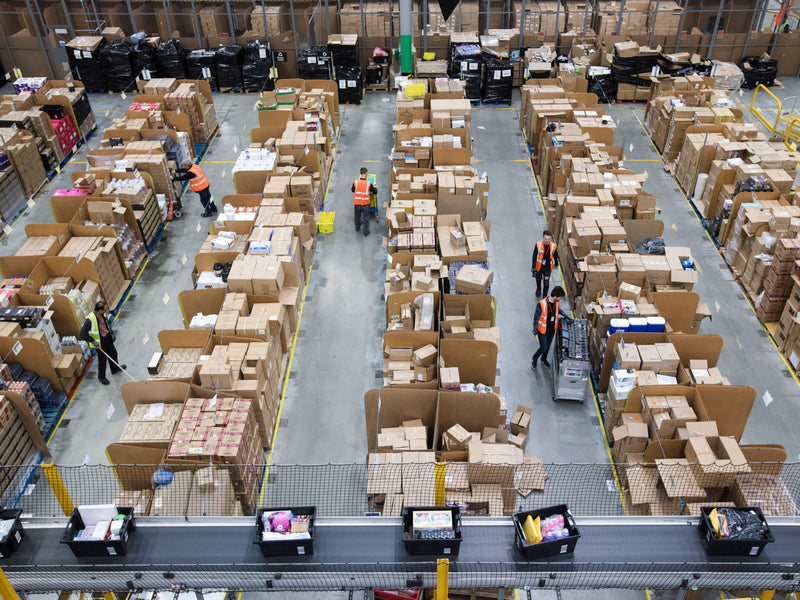Packaging should be a silent ambassador for your brand. It keeps product safe, delights the customer, and disappears without guilt or landfill fees. Yet for many growing eCommerce businesses packaging is still little more than a cost line dictated by legacy supplier contracts and a pick-and-pack workflow inherited from 2018.
As Extended Producer Responsibility rules tighten in the United Kingdom and the European Union, and as voluntary B Corp points now hinge on measurable waste reductions, the real price of outdated materials is climbing fast. The UK Department for Environment, Food & Rural Affairs confirms that full EPR fees will reach brands with a turnover above £1 million and packaging volume above 25 tonnes as early as 2026, back-dated to 2023 packaging data https://www.gov.uk/government/publications/packaging-extended-producer-responsibility-epr.
At eComplete we have overhauled packaging for beauty, wellness, and lifestyle brands that ship millions of orders a year. Our operator view is blunt. When you optimise packaging you do three things at once: you slash DIM weight and courier surcharges, you lower Scope 3 emissions, and you win loyalty from shoppers who hate waste. This article maps the full journey from audit to implementation and shows how the brands we operate move from high-impact but disposable packaging to circular, cost-positive systems that grow with order volume, not against it.
Audit First: Where the Money and Carbon Really Sit
Before you buy a single roll of recycled tape you need numbers that will survive a CFO review and a B Lab audit. Work line-by-line from supplier invoice to recycling bin.
Collect twelve months of packaging spend and break each SKU into cost, grams of material, recycled content, and disposal path. The GHG Protocol places packaging in Scope 3 Category 1 (purchased goods) and Category 12 (end-of-life). Use DEFRA’s packaging conversion factors for carbon modelling; the 2025 set includes recycled PET, kraft mailers, and starch-based void fill so you can model like-for-like swaps without assumptions https://www.gov.uk/government/collections/government-conversion-factors-for-company-reporting.
Next, tie each SKU to carrier DIM charges. A right-size automation test we ran for a health supplement brand showed that for every five cubic centimetres shaved off a parcel we saved 0.3 pence in courier fees and 0.02 kilograms of CO₂. Over 300 000 orders that became £9 000 in annual savings and 6 tonnes of emissions avoided.
Finally, survey customers. Ask two questions in post-purchase NPS: “Was the packaging size appropriate?” and “Will you reuse or recycle it?” A pet-care brand we support saw NPS jump six points after switching to FSC-certified paper mailers printed with water-based inks. The lift paid for the mailer upgrade inside three months.
Operator tip
Measure packaging like you measure marketing spend. If the data lives only in procurement folders you will never surface optimisation levers for operations and finance.
Material and Design Shifts That Cut Waste Without Killing the Unboxing Moment
Right-size cartons
Use cartonisation algorithms that map SKU dimensions to the smallest viable box. Our in-house WMS plugin integrates with EasyPost’s SmartRate API so the picker sees the best-fit carton before the product leaves the shelf. International Data Corporation research shows automated cartonisation can cut parcel volume by 15 percent across a typical SKU mix and reduce cardboard use by 12 percent https://www.idc.com/getdoc.jsp?containerId=AGR258564. Lower volume reduces courier fuel burn and passes direct savings to the brand on DIM weight.
Switch to recycled or certified substrates
Post-consumer recycled (PCR) content counts twice: once against virgin-material reduction and again under EPR fee rebates that reward recycled input. Look for suppliers with Global Recycled Standard or FSC chain-of-custody certification. The Ellen MacArthur Foundation reports that every tonne of recycled paper packaging avoids 1.8 tonnes of CO₂ and saves 31 000 litres of water compared with virgin pulp https://ellenmacarthurfoundation.org/.
Ditch mixed-material lamination
Glossy film-laminated boxes create a landfill headache and cost more per unit. Replace them with aqueous or UV coatings and fibre-based barrier layers that keep print quality high while making the entire box curb-side recyclable. Brands like REN Skincare switched to mono-material cartons in 2024 and now save an estimated 8 percent on packaging disposal costs each quarter according to their public impact report https://www.renskincare.com/pages/our-journey.
Adopt tear-strip reopeners and resealable mailers
Returns trigger emissions and cost in reverse logistics, but you can at least stop wasteful second cartons. Reusable paper mailers with double adhesive lines let customers reseal the package. Patagonia moved to double-strip recycled paper mailers in 2023 and documented a 38 percent reduction in outbound returns packaging weight within the first year of rollout https://www.patagonia.com/our-footprint/.
Operator tip
Run A/B tests on customer unboxing. Audit time to open, ease of disposal, and brand perception. A great unboxing sequence can raise repeat purchase by up to 15 percent over six months based on our retention cohort tracking.
Implementation Playbook: From Prototype to Purchase Order Without Supply-Chain Chaos
Phase 1: Rapid prototyping and drop tests
Partner with a packaging lab or 3PL that owns ISTA or ISO 2233 drop-test equipment. Send ten order combinations that reflect 80 percent of your volume. Prototype mailers in corrugated kraft, PCR poly, and compostable film, then drop test at every orientation. This finds the thin line between material savings and breakage.
Phase 2: Cost and carbon modelling
For each finalist design build a landed cost model. Include unit price, courier DIM charges, warehouse handling time, and EPR fees. Apply DEFRA or EPA conversion factors to get CO₂ per order. The design that wins usually cuts grams first, then selects recycled inputs second.
Phase 3: Supplier tender
Run a joint RFP across packaging converters and 3PLs so lead-times, kitting, and pallet storage are baked into the price. Mandate proof of recycled-content claims under ISO 14021 to avoid greenwashing risk. Ask for quarterly price reviews pegged to virgin material spot prices so savings pass through when paper or plastic prices fall.
Phase 4: Pilot fulfilment
Roll the new SKU mix in one region or channel. Track pick time, order accuracy, and damage. Our metrics show a two-week stabilisation curve before pickers settle into new carton SKUs. Capture customer feedback in NPS and review courier claims data.
Phase 5: Full rollout and continuous improvement
Feed pilot learnings into global rollout. Build monthly dashboards that surface SKU-package mis-matches and returns packaging waste. Review DIM surcharges every quarter. We encourage finance and sustainability leads to co-author a packaging impact note for board updates so climate targets and cost savings stay in one narrative.
Operator tip
Lock packaging SKUs to WMS logic, not picker preference. One beauty brand saw cartonisation gains erode after twelve months because holiday temps defaulted to oversize boxes. WMS guardrails restored savings within weeks.
Conclusion: Packaging as a Profit Lever, Not a Cost Drag
Brands that treat packaging as a static cost line leave money and B Corp points on the table. Packaging 2.0 is data driven, right-sized, mono-material, and fully tied to courier and EPR economics. The outcome is fewer grams, fewer cubic centimetres, lower courier fees, and a sustainability narrative that resonates with customers and investors alike.
When implemented systematically the savings fund the material switch. Our wellness client cut packaging cost per order by 11 percent, reduced annual Scope 3 by 170 tonnes of CO₂, and lifted NPS by 6 points inside nine months. Every step was measurable, auditable, and aligned to the Science Based Targets Initiative near-term trajectory.
If your packaging invoices creep up, if DIM surcharges surprise finance, or if B Corp auditors flag low recycled content, it is time for a packaging audit. eComplete delivers operator-tested playbooks, runs tender processes, and manages the warehouse rollout so your team focuses on growth.
Ready to turn packaging from headache to headline win?



